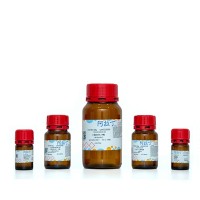Detecting Point Mutations by Denaturing-Gradient Gel Electrophoresis
Denaturing-gradient gel electrophoresis (DGGE) detects DNA sequence differences. Thus, it can be used to screen for point mutations or other types of mutation prior to DNA sequence analysis. The technique, first described by Fischer and Lerman (1 ), entails electrophoresis of DNA fragments at high temperature (approx. 60�C) in an acrylamide gel that contains a gradient of denaturant (formamide and urea). As a DNA fragment migrates in the gel, it encounters increasing concentrations of denaturant and at some point, it will become partially or totally single-stranded (melted, denatured). The position at which the DNA melts is determined by its nucleotide sequence and composition. Partial or complete denaturation causes a marked decrease in the electrophoretic mobility of the DNA and results in bands that are usually quite sharp. Two DNA fragments of the same size but of different sequence frequently will denature at different points within the gradient, and will therefore be separable by DGGE. In general, A-T-rich sequences denature at lower denaturant concentrations than G-C rich sequences. The method is applicable for fragments that are about 50–1000 bp long (2 ,3 ).
![预览]()






